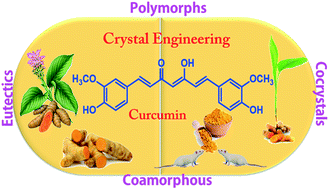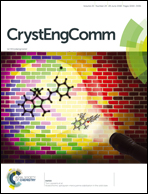Curcumin: pharmaceutical solids as a platform to improve solubility and bioavailability†
Abstract
Curcumin (CUR) is the prime curcuminoid in the Indian dietary spice turmeric, Curcuma longa, a plant of the Zingiberaceae family. CUR has promising and diverse therapeutic benefits, such as antioxidant, anti-inflammatory, antitumor, anti-hyperglycemic, antimalarial, antibacterial, and antiviral activity, including anti-Alzheimer's disease. However, CUR is yet to reach the status of a therapeutic drug candidate mainly because a standard solid dosage of curcumin suffers from poor oral bioavailability (0.05 μg mL−1, less than 1%). The reasons behind its low bioavailability include poor solubility (<8 μg mL−1 in water), low permeability and absorption, and rapid metabolism (short elimination half-life of <2 h). A successful CUR therapy requires an appropriate formulation system that will enhance the bioavailability and offer greater therapeutic efficacy. This review covers a comprehensive description of the CUR pharmaceutical solids, such as polymorphs, cocrystals, eutectics, and coamorphous solid-state forms with aim to determine ways to improve its physicochemical properties, including dissolution rate, solubility, physicochemical stability, mechanical strength, compressibility for tablet formation, and oral bioavailability. The cumulative publications in the past decade have forecast a bright future for development of an oral drug formulation of curcumin.

- This article is part of the themed collections: CrystEngComm 20th volume collection and 2018 Highlight article collection


 Please wait while we load your content...
Please wait while we load your content...